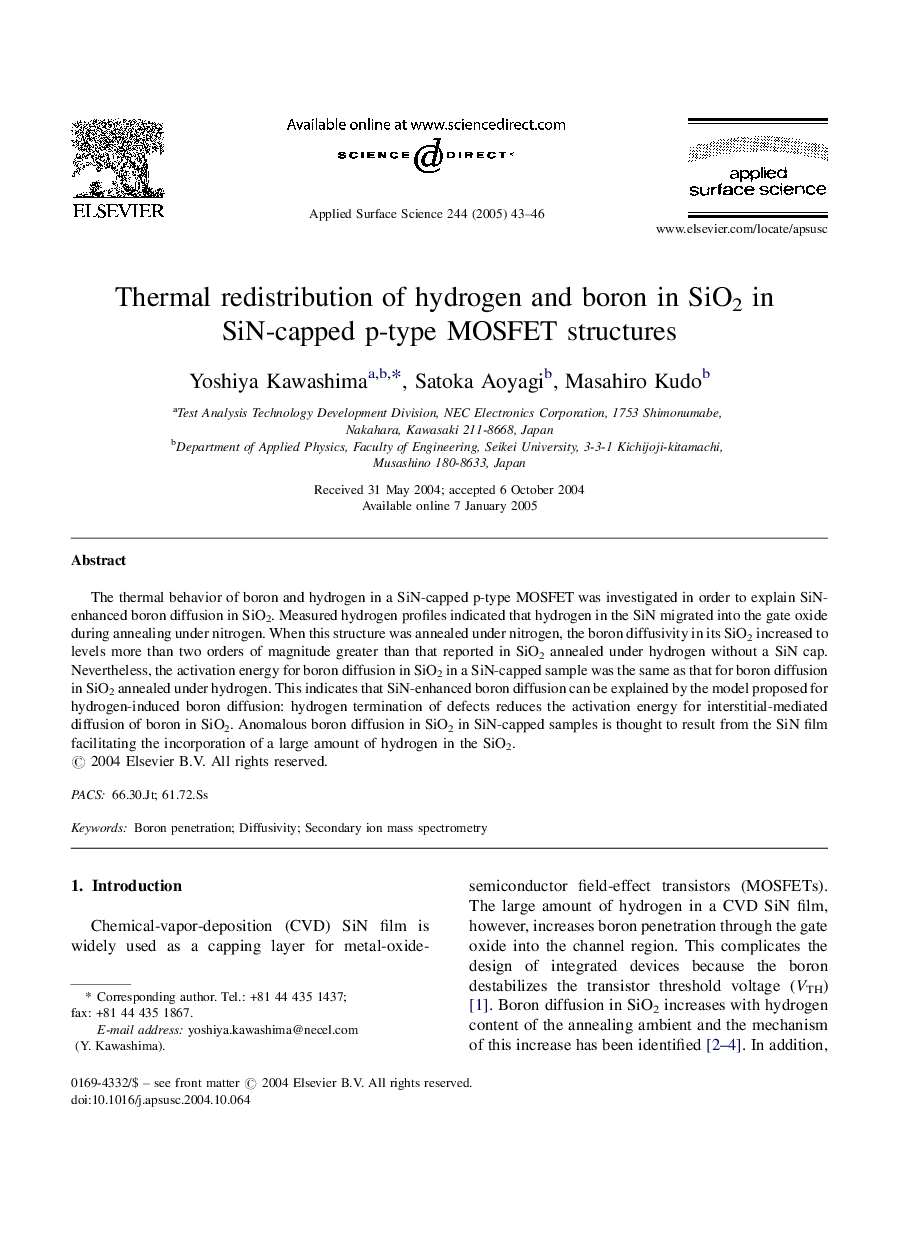| Article ID | Journal | Published Year | Pages | File Type |
|---|---|---|---|---|
| 9567282 | Applied Surface Science | 2005 | 4 Pages |
Abstract
The thermal behavior of boron and hydrogen in a SiN-capped p-type MOSFET was investigated in order to explain SiN-enhanced boron diffusion in SiO2. Measured hydrogen profiles indicated that hydrogen in the SiN migrated into the gate oxide during annealing under nitrogen. When this structure was annealed under nitrogen, the boron diffusivity in its SiO2 increased to levels more than two orders of magnitude greater than that reported in SiO2 annealed under hydrogen without a SiN cap. Nevertheless, the activation energy for boron diffusion in SiO2 in a SiN-capped sample was the same as that for boron diffusion in SiO2 annealed under hydrogen. This indicates that SiN-enhanced boron diffusion can be explained by the model proposed for hydrogen-induced boron diffusion: hydrogen termination of defects reduces the activation energy for interstitial-mediated diffusion of boron in SiO2. Anomalous boron diffusion in SiO2 in SiN-capped samples is thought to result from the SiN film facilitating the incorporation of a large amount of hydrogen in the SiO2.
Related Topics
Physical Sciences and Engineering
Chemistry
Physical and Theoretical Chemistry
Authors
Yoshiya Kawashima, Satoka Aoyagi, Masahiro Kudo,
